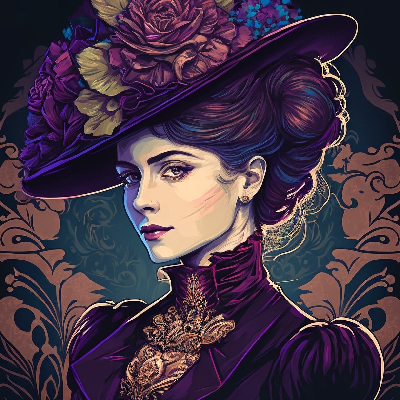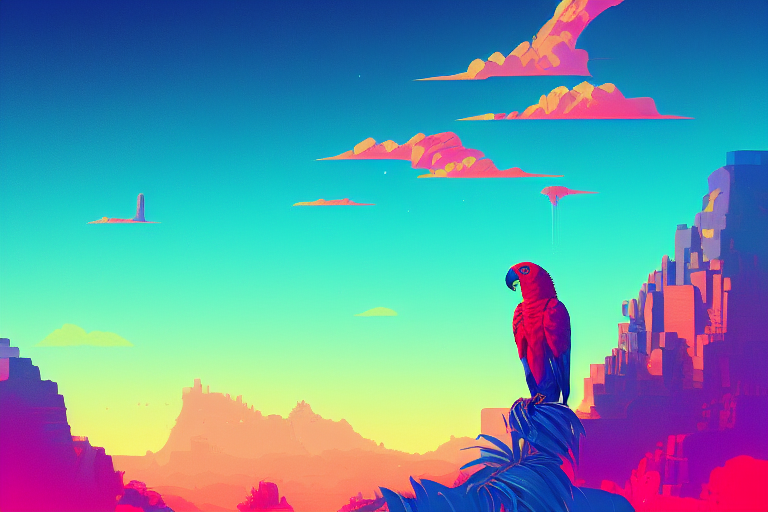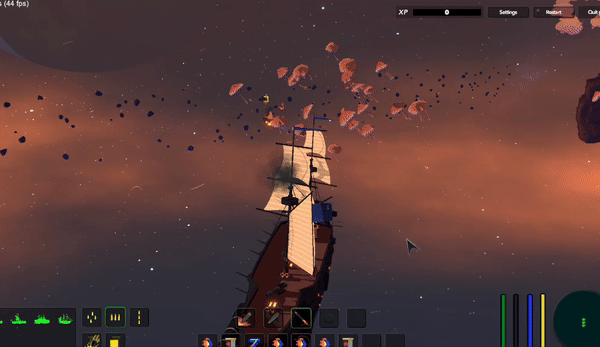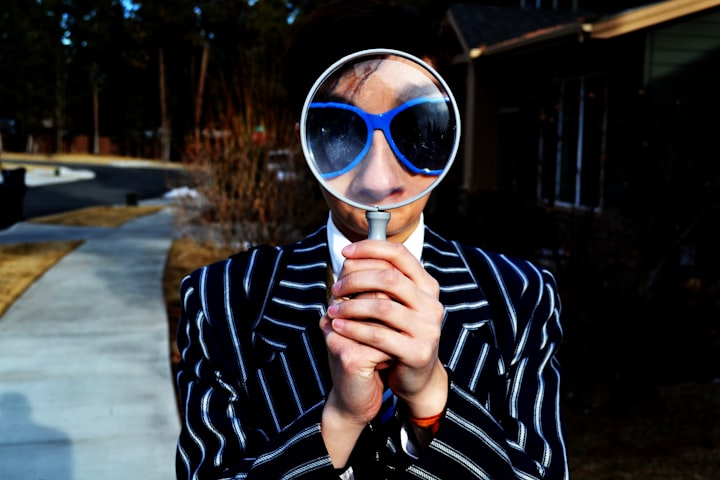Exploring the Intersection of Art and AI: An Interview with Stephen Young
Unleashing creativity with AI: Stephen Young discusses his artistic journey and AI-enhanced projects

Welcome to another installment of our ongoing interview series on ReplicateCodex.com! As a platform that allows users to search, filter, and sort AI models to find the right one for their projects, we’re always on the lookout for interesting and innovative ways that people are using AI in their creative endeavors. Today, we’re thrilled to chat with Stephen Young, an artist and developer who is pushing the boundaries of what’s possible at the intersection of art and AI.
Q: Hi Stephen! I’d love to hear more about how you first became interested in the intersection of art and AI. What inspired you to start creating art with AI?
Stephen Young: In July 2021 I learned about the big-sleep from a post on reddit. It’s a BigGAN+Clip implementation if I recall. It was fun, but I couldn’t see the potential at the time. Later that year, in December, I discovered Wombo. The speed of that app allowed me to experiment quickly and it opened my eyes to the potential of AI. It’s funny to say that now because the VQGAN images are so incoherent, but at the time it was mind-blowing! I had to go deeper! From there, I joined Twitter for AI news, got into the Colab notebooks, joined a bunch of discords, fired up disco diffusion, etc. It was an awesome time to join right before the scene blew up with Midjourney, Dalle-2, Stable Diffusion, etc.
Q: I’m fascinated by your project “Prompt Parrot.” Could you give me an overview of what Prompt Parrot is and how it leverages AI in the creative process?
Prompt Parrot was originally a colab notebook that finetunes gpt2 on your own prompts. I thought it would be amazing to have my own little LM that could output prompts in my own style. And it worked pretty well! It was crazy cool to watch the AI parrot my prompts. But it had limitations due to the limited training corpus size. It was difficult to get enough text to satisfy it. That was a barrier to entry for most folks. Typically no one has hundreds or thousands of prompts lying around. So I trained on a much larger corpus of community-sourced prompts. And then Replicate invited me to host it on their site. So Prompt Parrot is both a colab and a stand-alone model anyone can use on Replicate!

Q: Prompt Parrot 2.0 is out now! How has Prompt Parrot evolved since its initial release, and what are some of the new features in version 2.0 that I can look forward to?
Prompt Parrot 2.0 introduced quality-of-life features to the notebook to streamline the training experience. I added stable diffusion 1.5, so the generated prompts could be immediately visualized. And of course, I created the standalone model on Replicate, which was created with the notebook!
Q: Your work includes mixed media that combines AI, digital painting, and photography. How do you approach integrating these different mediums into a cohesive piece of art?
The tools are evolving so fast that I’m still figuring this out. There are huge releases monthly, and this has been going on for over a year now! Currently, my technique is focused on prompt engineering with minimal post-processing in Lightroom and Procreate. I sometimes incorporate my own photography with initial images and image prompts. I believe we’ll see all these techniques converge very soon. There are already AI-centered image editors and of course, Adobe has had neural filters for a while and they just introduced Firefly.
Q: I’ve noticed you’re part of the Stable Diffusion Artist Studies. Can you tell me more about this community and what it means to you as an AI artist?
Thank you for asking about the stable diffusion studies! It all started because I wanted to know what the heck was in the AI and how it responded to certain words. @proximasan started the studies as a Twitter thread. Then @EErratica, @sureailabs, and I joined them. Before long, the four of us had organized. And now we’ve compiled massive galleries of example imagery for Disco, SD1.5, SD2.0, and others. I’m immensely proud of what we’ve achieved. You can find all the ongoing work on parrotzone.art.
Q: You’ve shared your FILM Frame Interpolation Colab with the public. How does frame interpolation work, and what are some creative applications for this technique in the realm of digital art?
Frame Interpolation is the technique of inferring the frames between two still images. The technique predates AI, in fact. You can use this to add frames to an existing video or infer between two still photos to create motion where it didn’t exist. What FiLM excels at is large scene motion where traditional interpolation techniques could only operate on two very similar frames. There are limitations, but in some cases FiLM can effectively add animation between photos. For the AI art community, the primary use case is for blending unrelated still images together with groovy transition effects from the interpolations!
Editor’s note: You can find out more about video frame interpolation in our deep-dive into Rife Diffusion!
Q: As both a developer and an artist, how do you strike a balance between your technical skills and your creative instincts? Are there any unique challenges or opportunities that arise from this dual background?
I see those two as very complimentary. Coding is inherently creative problem-solving, and this is how I view art as well. I think “I want to create this thing, what steps are required to get there!” And then I figure it out. With AI generative art, the skills quite literally converge when I write Python code to create art!
Q: Your Instagram and Mastodon profiles showcase a variety of your art pieces. How do you decide which platforms to use for sharing your work, and how do you engage with your audience on these platforms?
It’s all vibes-based decision-making! I post to Twitter, Mastodon, Instagram, and Hive based on where I feel like posting. I’m very responsive to replies. I try to respond to everyone! I love interacting with the community. It keeps me motivated!
Q: In the world of AI-generated art, there’s often a discussion about the role of the artist versus the role of the AI. What’s your perspective on this topic, and how do you define your own role in the creative process?
In my view, AI is another medium that can be used to create art. It sits in the same category as digital painting, photography, and post-processing filters. I don’t view AI as a replacement for humans but as an enhanced tool that any artist may or may not choose to engage with. So quite simply I consider myself to be an artist who uses AI in their process.
Q: Lastly, Stephen, what advice would you give to aspiring artists who are interested in exploring AI and technology as tools for artistic expression?
Stephen Young: Thank you for taking the time to interview me! It’s been a pleasure. To artists new to AI, I would say, if you’re on the fence, give it a chance! Try it out. It’s an extremely potent creative tool with applications ranging from reference image generation to finished works. Regardless of whether you incorporate it into your workflow, it’s a hell of a lot of fun to use!
Conclusion
Our conversation with Stephen has given us a glimpse into the fascinating world of AI-generated art and the creative potential of AI models. Stephen’s innovative projects like “Prompt Parrot” and his involvement in the Stable Diffusion Artist Studies demonstrate how artists can leverage AI to enhance their creative expression and produce unique and captivating artwork. Whether you’re an aspiring artist or a seasoned professional, Stephen’s journey serves as an inspiration to explore the limitless possibilities that AI has to offer.
Thank you, Stephen, for sharing your insights and experiences with us. We’re excited to see what new projects and artistic endeavors you’ll embark on in the future!
To learn more about the artist’s work and to stay updated on his latest projects, be sure to follow Stephen on social media and visit this online portfolio link. And don’t forget to explore the wide range of AI models available on ReplicateCodex.com, where you can find the right AI model for your next creative project.
That’s it for this edition of our interview series on ReplicateCodex.com. Be sure to check back for more interviews with artists, developers, and innovators who are pushing the boundaries of AI and technology. Until then, stay creative!
Subscribe or follow me on Twitter for more content like this!




Comments ()